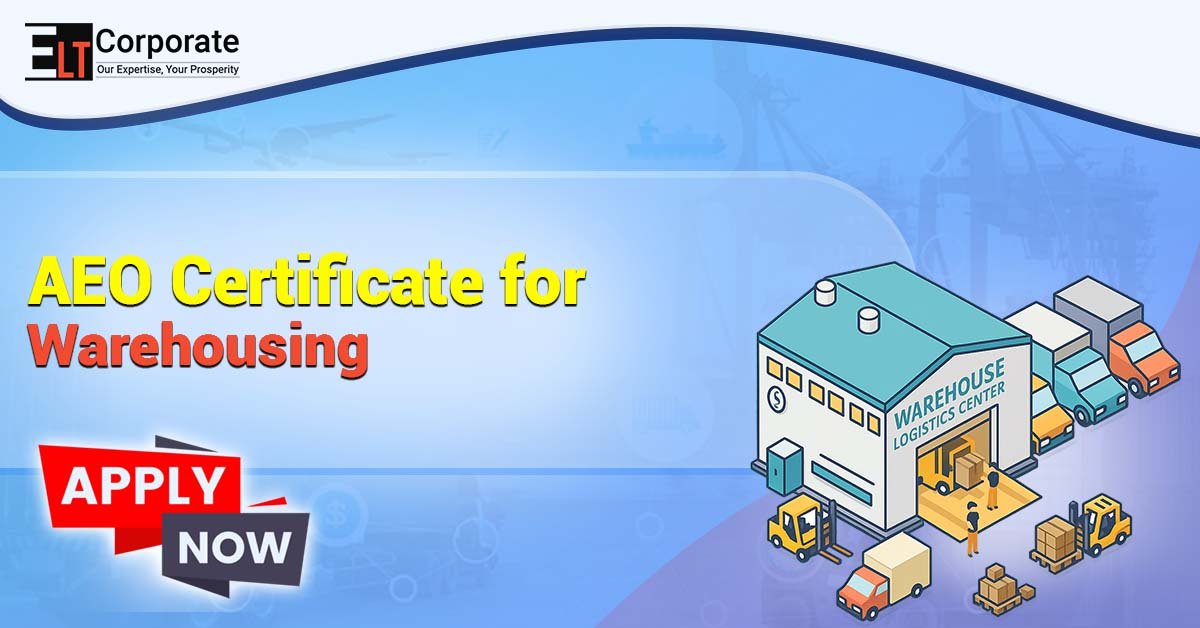Do you have a working warehouse where you handle your import-export goods? If you want to get an Authorised Economic Operator (AEO) Certificate for Warehousing, that can enhance your credibility and ensure smoother customs operations. With the help of AEO, your logistics chain can even be globally recognised.
Here we are with the detailed guide. In this, we’ll explain everything you need from applying the process to AEO certification for warehousing—eligibility, documentation, step-by-step process, benefits, and processing timeline as per CBIC norms.
What Is the AEO Certificate?
The AEO is a recognition granted to companies that strongly comply with customs laws, secure logistics practices, and financial transparency. This certificate is issued by the Central Board of Indirect Taxes and Customs (CBIC). For warehouse operators, this certification allows for clearance, fewer inspections, and enhanced business reputation in supply chain processes. Also read: How To Apply For an AEO Certificate for ExportersEligibility Criteria for Warehousing Units
If you handle a warehouse or logistics company where you manage your imported or exported goods, you should apply for the AEO certificate. This certificate will help you with faster customs approvals and many other benefits.AEO Tier: What It Means and Its Main Features
AEO-T1 Starting Level: You can apply online, and the department will check your papers and documents without even visiting your warehouse. AEO-T2 Mid Level: Along with document verification, customs officers will visit and review your warehouse. AEO-T3 Top Level: For big warehouse groups that have a clean record and strong systems in place. You get the most advantages at this level.Minimum Eligibility Requirements:
- A valid IEC code is needed if you want to trade
- Documented space under the Warehousing (Development and Regulation) Act.
- Minimum 3 years of warehousing or logistics operations
- Full compliance with Customs, GST, and DGFT regulations
- Strong internal systems and SOPs for security, recordkeeping, and customs handling
Documents Needed for AEO Application (Warehousing)
Warehouse operators involved in the AEO certificate should collect the following documents:- Registration under the Warehousing Act (if applicable)
- IEC (if warehousing is part of a trading business)
- PAN & GST Registration Certificates
- Audited Financial Statements (last 3 years)
- Warehouse layout plans, entry/exit records, and security protocols
- SOPs for cargo handling, inventory tracking, and customs documentation
- Self-Assessment & Security Questionnaire (mandatory for T2 & T3)
Step-by-Step Process to Apply for an AEO Certificate
Step 1: Choose the Appropriate AEO Tier
Depending on your scale and security systems, choose between:- AEO-T1 – For small to medium operators with necessary compliance systems
- AEO-T2 – For facilities with documented SOPs and verifiable controls
- AEO-T3 – For large warehousing/logistics networks with excellent records
Step 2: Register on the AEO Portal
Go to aeoindia.gov.in and register your business unit. (T2 and T3 applicants can also submit applications physically to the customs office)Step 3: Fill and Submit Required Forms
- Annexure A – Application Form (All tiers)
- Annexure B – Security Questionnaire (T2 and T3 only)
Step 4: Upload All Required Documents
Ensure all documents (SOPs, layout, financials, registrations) are complete, signed, and recent.Step 5: Verification and Inspection
- T1: Documents verified digitally by Customs
- T2 & T3: Site inspection by Customs officials, checking SOPs, surveillance, and access controls
AEO Certificate Processing Time
AEO Tier Processing Time AEO-T1 – 30 working days AEO-T2 – 60 to 90 working days AEO-T3 – Up to 120 working daysBenefits of AEO Certification for Warehousing Units
Warehouse operators with AEO status enjoy:- Faster shipment clearance at customs
- Reduced frequency of physical inspection
- Ease in bank guarantee requirements
- Trust for secure warehousing & logistics
- Global credibility via Mutual Recognition Agreements (MRAs)
Why You Should Hire Professionals
Preparing and applying for an AEO certificate for warehousing demands specialised expertise:- Preparing SOPs for logistics operations
- Mapping facility security protocols
- Assuring adherence to CBIC requirements
- Coordinating with Customs rules during inspections








